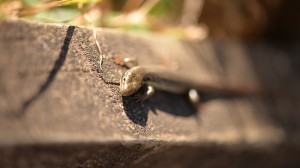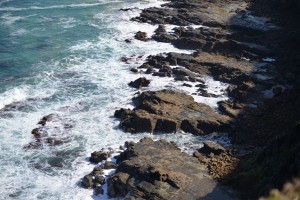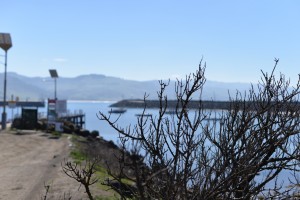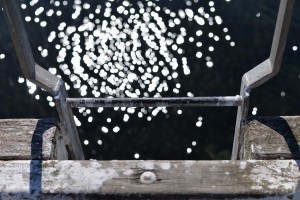I think the biggest thing that must be done to make a documentary both political and poetic is simply to ignore some of the fundamental aspects of what it is that makes a documentary a documentary.
This sentence may be slightly contradictory, however, if you’d taken part in my past semester you might understand. Documentaries are classically known for a variety of structures that make them a documentary. Examples of these are interviews, voiceovers, generally all of the footage is shot by the documentary makers and is ‘real footage’ of the events, all of the imagery is photorealistic and must seem real, as well as many others. By purposely not adhering to some of these constraints of documentary, your film can seem much more poetic whilst still having the ability to tackle serious political topics.
The first documentary task we did was to make two short documentaries, one, which was all found footage and the other, we shot ourselves, neither of which could contain interviews. This really started to get our heads around how we could be creative and do something a bit different with the documentaries we make. Finally we settled on our final ideas and started collecting footage for our found footage documentary. There were a lot of documentaries and videos containing footage of animal cruelty in chicken factories. The biggest issue was finding footage with high enough resolutions. We started looking at how we would piece it together in terms of a structured plot and most importantly what we were going to do with the soundtrack. We spent a quite a while listening to music until we found an appropriate track but the dialogue was going to be a fundamental part of how it was going to turn out. Brady and I trialled multiple ideas that could work, this included things such as children laughing and talking, cooking shows, children’s cooking shows, cutting dialogue out of other documentaries (but they were always terrible quality for what we wanted to hear) until we found a BuzzFeed video of people taste testing various brands of fried chicken. Hearing them describe the flavours and texture of the chicken while watching the horrific visuals of the conditions of the chickens seemed to work as it numbed the imagery to a certain extent but still managed to get the point across. I feel like by having the people eating chicken it adds an extra layer to the argument because they are eating chicken from the exact kind of places that encourage the conditions in the farms. It feels like less of a sob story and more truthful. By having this connection between the audio and the visuals I feel like it is a somewhat ‘poetic’ way of presenting the topic and our standpoint.
The second documentary we made was the one with our own footage. The way Brady and I worked was to select one each and then work on them separately and then help each other out. Brady did the found footage and I mainly focused on this one. We chose to do a far more abstract documentary on beauty, attempting to make the point that it is not how attractive your features may be but the enjoyment and beauty that they can give you. Some of the main inspirations for me with this assignment has been from photographers such as Michaela Noroc and her ‘The Atlas of Beauty’ project, Marcos Alberti and his Wine Project and even to a certain extent Brandon Stanton the photographer behind Humans of New York. I love this profiling of people and concept of seeing the beauty in anyone; I wanted to incorporate this idea in this project. I filmed various friends of mine in uncomfortable situations and tried to capture them in moments of raw beauty and happiness. I also filmed scenic shots on a road trip down the Great Ocean Road (below are some photographs I took during this trip as well). This documentary didn’t include any formal interviews or specifically talk about to the concept we were trying to cover. This is much different in comparison to Patrick and Ruby’s found footage documentary about Climate Change, which was fantastically sharp, and to the point about the topic in a very witty way. Or even Kiralee and Evan’s shot footage film about Safe Schools, which was also very clear as to what they were discussing. Whereas, ours was much more abstract, I don’t necessarily think this was a bad thing, because I believe “You’ve Got Beautiful Eyes” turned out to be poetic and was still appealing to watch.
The final documentaries we made I personally feel like was our best work. At this point we had settled into the course and I had learnt a lot about the best ways to edit and what makes a documentary better. I think that the entire class made these with a lot less speed bumps and everyone’s final documentary turned out really well. My personal favourites were Nikki, Bridgette and Ali’s documentary about gender fluidity. I really like their visuals and the effort they made to shoot some of their own images really showed. The whole thing flowed really well and I found it fascinating and informative. My other personal favourite was ‘Flow’ by Ruby, Elaine and Haylee, they were looking at another great topic and I think it pieced together effectively. For ‘it’ we all went out separately and got interviews, then we came together to create a soundtrack incorporating the interviews. Making the soundtrack first was an interesting way to do it but it worked out very well for us. From here we designed a storyboard with imagery relating to ‘it’ (or sex) that were not photorealistic. We then managed to act this out and do it all in a long take. I’m happy with how it turned out and I think in terms of all the work I’ve created this semester this one has spoken to how a documentary can be both political and poetic. By covering a topic and not actually using any words or visuals relating to it but still making it very clear what you are talking about is quite an achievement and I think that answers the overarching question of the studio.



